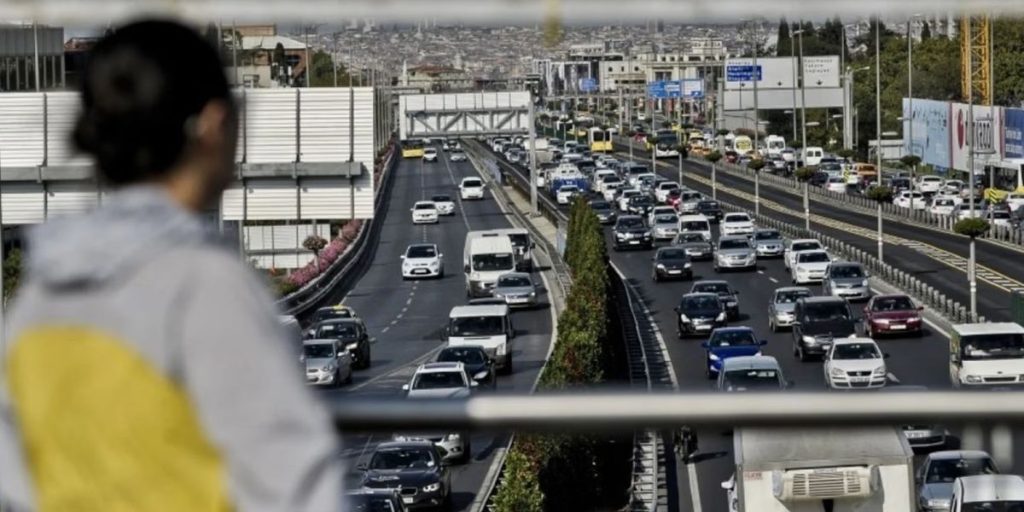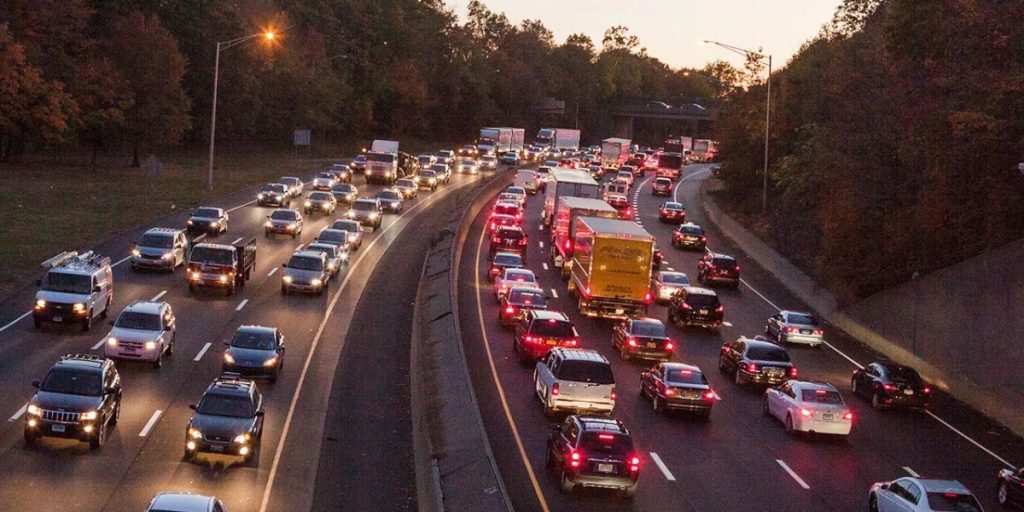American cities are congested. American cities experience significant traffic congestion, from narrow roadways to morning and evening rush hours. If you’re anything like me, when you think of bad traffic, Los Angeles comes to mind. But, surprisingly, Los Angeles isn’t even in the top five!
Let’s take a look at the seven cities in America that have the absolute worst traffic, according to INRIX’s 2022 Global Traffic Scorecard. Number one is not what you’d expect!
7. Los Angeles
Of course, Los Angeles has some of the worst traffic in the United States of America. However, you may have predicted that Los Angeles came in first. In fact, it has the seventh worst traffic of any American city.
With massive populations and dreadful peak hours, Los Angeles delivers a powerful punch when it comes to traffic, with the average driver wasting 95 hours of their lives on it. If you’re planning a trip to Los Angeles, make sure to figure in time spent on the road. Make sure to avoid rush hour!
6. San Francisco
San Francisco, the most beautiful city in America, has the sixth worst traffic. San Francisco has beautiful beaches and artistic streets, but it also has some of the most congested traffic in America. According to INRIX, the average driver loses approximately 97 hours per year to San Francisco traffic. If you’re a guest, you won’t have to worry about such a significant time loss; but, you should plan your vacation around travel time!
5. Miami
The beautiful and enjoyable city of Miami has one huge disadvantage: traffic! Miami has the fifth-worst traffic in America. As per INRIX, drivers in Miami spend 105 hours a year stuck in traffic. Interestingly, Miami ranks in terms of global traffic. The city has the world’s ninth-worst traffic! Miami inhabitants must deal with heavy traffic due to the city’s vast population and lack of public transportation.
4. Philadelphia
The East Coast states have some of the most congested traffic in the United States. Philadelphia, PA, is one of the busiest cities in the country, having the fourth-highest traffic congestion. Every year, Philadelphia drivers lose an average of 114 hours due to traffic. A large portion of Philadelphia’s bad traffic is due to peak hour commuting periods, which produce huge road backups.

3. New York City
It’s no surprise that New York City is among the cities with the worst traffic in the United States. New York City has densely packed blocks and a vast population, and its driving style is famously intense. According to INRIX, drivers in New York City waste 117 hours per year due to traffic. If you’re visiting New York City, you’re better off walking or taking the subway. Fortunately, the city has a powerful public transportation system!
2. Boston
Another East Coast city has some of America’s worst traffic. That city is Boston! Boston has the country’s second-worst traffic, with drivers losing an average of 134 hours a year. In recent years, traffic has gotten worse. If you’re a Boston native, you’ve probably observed this, and visitors should stick to the T for public transportation.
1. Chicago
Finally, the American metropolis with the very worst traffic is Chicago, Illinois. The sole Midwestern city on this list is Chicago, which is also the region’s largest. Drivers in Chicago lose an average of 155 hours per year delayed in traffic. Fortunately, Chicago has a sizable train system, which allows many residents and visitors to avoid driving altogether.
Steps Required to Improve Traffic in the US
Investment in Public Transportation: Increasing investment in reliable and expansive public transportation systems can encourage individuals to opt for buses, trains, and subways. Enhanced connectivity, frequent services, and affordable fares can make public transit a more attractive option, reducing the number of private vehicles on the road.
Smart Traffic Management Technologies: Implementing cutting-edge technologies, such as smart traffic lights, real-time traffic monitoring, and predictive analytics, can optimize traffic flow. Adaptive traffic signals that respond to real-time conditions and intelligent algorithms can help alleviate bottlenecks and reduce congestion.

Promotion of Telecommuting and Flexible Work Hours: Encouraging telecommuting and flexible work schedules can help spread the peak-hour traffic load. Companies and organizations can adopt policies that allow employees to work from home, reducing the number of vehicles on the road during rush hours and promoting a healthier work-life balance.
Carpooling and Ridesharing Incentives: Promoting carpooling and ridesharing initiatives through incentives like tax breaks, dedicated lanes, or reduced tolls can encourage people to share rides. This not only reduces the number of vehicles but also contributes to environmental conservation by lowering emissions per passenger.
Infrastructure Maintenance and Expansion: Investing in the maintenance and expansion of road infrastructure is crucial. Repairing potholes, optimizing intersections, and adding lanes to heavily trafficked routes can enhance traffic flow. Long-term planning and investment are necessary to accommodate the growing population and evolving transportation needs.
Sustainable Urban Planning: Adopting sustainable urban planning practices can reshape cities to reduce reliance on individual vehicles. Creating pedestrian-friendly zones, prioritizing bike lanes, and developing mixed-use neighborhoods can promote alternative modes of transportation, creating a more balanced and interconnected urban environment.
Conclusion:
Addressing traffic congestion in U.S. states requires a multifaceted approach that combines infrastructure improvements, technological innovation, and a shift in societal attitudes toward transportation. By implementing these six strategies, we can pave the way for a more efficient, sustainable, and enjoyable commuting experience for all.